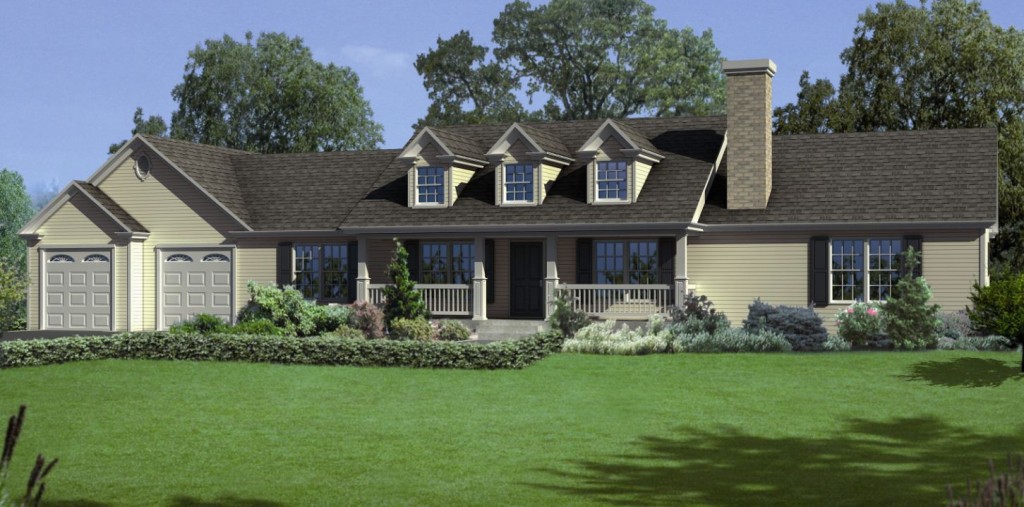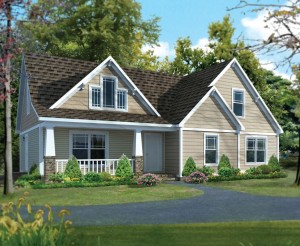Prefab versus Modular – What’s the Difference?


What is a Prefab Home?
The short answer is that all modular homes are prefab homes but not all prefab homes are modular homes. A prefab home is a type of home that consists of several components, or units, which are built in a factory and are then assembled onsite to construct a complete home. The word “prefab” was not actually coined by the industry as were terms such as modular homes, panelized home, concrete homes, or site-built homes. It was originally used as a composite term for panelized and modular building systems and is meant to refer to either one.
 In conventional on-site construction, everything required to construct a home is transported individually to the building site; bricks, lumber, cement, sand, roofing, sheathing, wiring, etc. The house is then constructed from these materials. With prefabricated construction, only the foundation is typically constructed on site in this way. Sections of walls, floors and roof are prefabricated (assembled) in a factory. Depending on the building system used, these sub-assemblies could be as small as a section of a wall or as large as an entire module of a home. These sub-assemblies are then transported to the home site, lifted into place by a crane and assembled into a complete home.
In conventional on-site construction, everything required to construct a home is transported individually to the building site; bricks, lumber, cement, sand, roofing, sheathing, wiring, etc. The house is then constructed from these materials. With prefabricated construction, only the foundation is typically constructed on site in this way. Sections of walls, floors and roof are prefabricated (assembled) in a factory. Depending on the building system used, these sub-assemblies could be as small as a section of a wall or as large as an entire module of a home. These sub-assemblies are then transported to the home site, lifted into place by a crane and assembled into a complete home.
Prefab homes are designed based on the premise that building costs can be reduced and time can be saved if similar construction tasks can be group together and that assembly line techniques can be used. This process allows for skilled labor pools to be concentrated at one location, and coupled with the efficiency of using assembly line techniques, so that superior quality homes can be built. The prefabricated home construction process seeks to avoid the need to regularly transport so many workers to the home site and to avoid other pains often found in site built construction such as a lack of power, lack of water, exposure to bad weather or to work area hazardous conditions.
RELATED: What are Factory Built Homes?
Regional Differences
The term modular homes, while used throughout the country, is primarily used on the east coast and throughout the central parts of the country and the term prefab homes, is primarily used on the west coast. Not only are the terms used to describe prefabricated construction different throughout the country, but the perceptions of what it means is primarily based on a design style rather than a construction method.
In the western parts of the country, the term prefab is more closely related to the style of home, usually modernist or contemporary, rather than to a particular method of home construction. In the rest of the country, the common term is a modular home. Historically, it meant a simple ranch home but modular constructions growth in popularity and the elimination of many of its previous design limitations has made it a popular construction method for virtually every style of home.
Modern Architecture
 Primarily on the west coast, modern architects are experimenting with prefab construction as a means to deliver mass-produced and well-designed modern homes. Modern architecture renounces referential decoration and instead highlights clean lines and open floor plans. With the focus on design simplification that modern architecture promotes, there are many in the factory-built housing sector that believe modern architectural designs are better suited for prefab home construction. In addition, there are also many current prefab home designs that have begun to include architectural details inspired by postmodernism or futurist architecture.
Primarily on the west coast, modern architects are experimenting with prefab construction as a means to deliver mass-produced and well-designed modern homes. Modern architecture renounces referential decoration and instead highlights clean lines and open floor plans. With the focus on design simplification that modern architecture promotes, there are many in the factory-built housing sector that believe modern architectural designs are better suited for prefab home construction. In addition, there are also many current prefab home designs that have begun to include architectural details inspired by postmodernism or futurist architecture.
Within the prefab homes movement, the use of green materials in the construction process has grown. Home buyers can choose between different environmentally friendly interior and exterior finishes, flooring materials, and wall systems. Since prefabricated homes are built in sections or pieces, many times it is easy for a home buyer to add additional rooms or even solar panels to the roof. Prefabricated homes can be customized to the client’s specific location and climate, making them more flexible and modern than ever before.
See my previous post: Today’s Modular Home Construction is Energy-efficient and Quality Built
The post Prefab versus Modular – What’s the Difference? appeared first on Impresa Modular.




